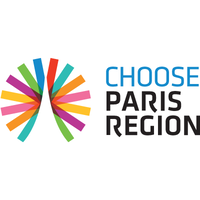
With €10bn of public investment between now and 2025 to accelerate its ecological transition, Paris Region holds the key to redesigning its industrial and urban landscape over the next four years. The economic, environmental and solidarity recovery plan, put in place by the Region, allocates €680m to businesses and innovation and €238m to ecological recovery and transport, out of a total of €1.3bn. All of which is enough to "green" in an innovative way, the 270 hectares of industrial land available in Paris Region. The Arboretum project in Nanterre, designed by architects Laisné-Roussel and Leclercq Associés, is part of this global reflection, aiming to respond to the economic recovery's health, societal and environmental challenges. It involves turning a former industrial wasteland site into a 125,000 sqm office campus made of solid wood, using the low carbon technology developed by Woodeum. Located in a 9-hectare park nearby the Seine, Arboretum integrates plants as the first source of well-being at work.
Grand Paris, driver for innovation
Grand Paris Express development project and its extensions have made Paris Region an ideal playground for investors. As the nation's incubator, the Region already concentrates 15% of national research, notably through its Paris-Saclay cluster and is committed to sustainable construction to achieve car-bon neutrality by 2050. To achieve this, it can rely on many companies at the cutting edge of new technologies in the fields of low-carbon construction, energy performance and bio-sourced materials. The energy renovation programme, launched by the French government at the end of 2020, has selected 351 Paris Region projects to renovate public buildings, higher education, research and student life buildings. Besides, the "Biosourced Wood Pact", which promotes the use of sustainable and renewable materials that emit up to 60% fewer greenhouse gases than concrete, has been signed by the Region's leading developers and project owners. The Treed it programme, located in the heart of the "Descartes Cluster, a sustainable city", the main research site in eastern Paris, developed by EpaMarne-EpaFrance, is an example of an operation remarkable for its environmental quality. It includes a 37-metre-high wooden-framed tower (ground floor + 11 floors) and a silo car park (ground floor + 3 floors) with a wood structure.
The 3rd round of “Inventing the Greater Paris Metropolis” – the largest architecture and urban planning consultation in Europe organised by Métropole du Grand Paris – will for another year ensure the continuity of R&D know-how of players in the region and of their commitment to energy transition and environmental transformation.

Project adjoining Bagneux station (Société du Grand Paris and Semaba), with a total of 27,400 sq.m of housing, including 20% subsidized housing, 5,600 sq. m of retail and a 500 space car park. © Société du Grand Paris;Mimram-Brenac
Circular economy projects
While the circular economy is becoming more and more significant in architectural projects, the Société du Grand Paris has integrated the imperatives of recycling and reuse into its action plans. For instance, the earth excavated on the Grand Paris Express construction sites is now recycled and reused in the earth brick manufacturing plant in Sevran (93). The health crisis has highlighted the need for new architectural models to adapt to new ways of living. To that end, developers favour mix building, eager to reintroduce a human and societal dimension into real estate. Mixed-use programmes have the virtue of bringing new life to neighbourhoods by mixing the working and non-working population and by locating shops, offices, housing and service companies in the same area. For instance, the Morland-Mixité-Capitale urban renewal project (in Paris 4th) transformed the Paris prefecture's former administrative site to develop more than 11 uses open to Parisians and visitors. All these actions and initiatives show that the ecological transformation underway in Paris Region is opening up new prospects and opportunities for investors. What are you waiting for?
Intrested ? Meet us Right Now !






